Eleocharis austriaca
Eleocharis mamillata subspecies austriaca
Northern Spike-rush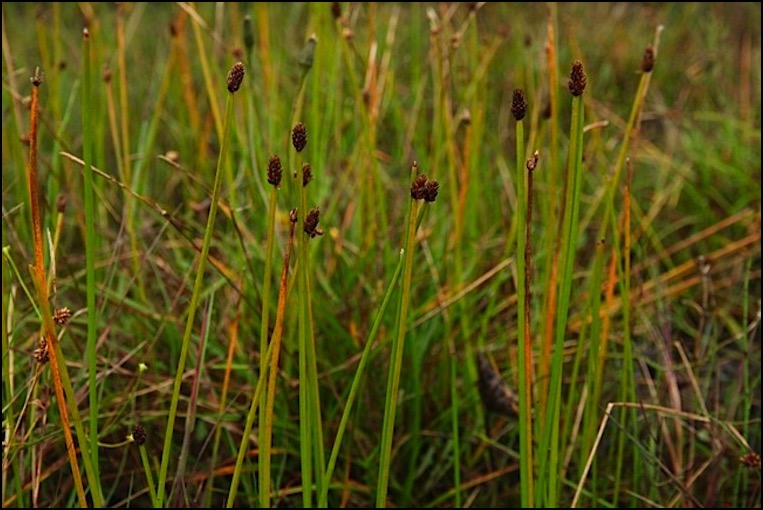
Eleocharis mamillata subspecies austriaca, Ribblehead Quarry (Yorkshire), September 2011
Use the linked "⇑" up-arrows with each topic header to get back here, or use the 'Top' button which appears in the lower-right corner when you're further down the page.
Links to all pages are at the bottom of the page.
This plant appears often in the literature as Eleocharis austriaca. Studies abroad suggest that intermediates connect E. austriaca with the similar ⇒E. mamillata, a plant of northern and central Europe, apparently more characteristic of acidic mires and stagnant pools. Hence austriaca has been subsumed under E. mamillata, as E. mamillata subspecies austriaca.
Subspecies mamillata is distinguished by its broader-based and lower style-base, rounded and apiculate – hence the epithet. See separate page.
British plants tend towards the intermediate zone between these two in some characters, but thus far no evidence has arisen of true subspecies mamillata. Work is proceeding to determine where UK plants fit with the situation abroad.
Overview ⇑
➢ an often tall-stemmed plant (only palustris compares for height), but very variable
➢ stems pale green, circular in section, flimsy and brittle
➢ basal sheaths not red/purple flushed at base (contrast palustris)
➢ patch-forming (like palustris and uniglumis, but unlike the tufted multicaulis), or even sheet-forming
➢ spikelets typically conical but can be ovoid (then similar to palustris)
➢ spikelets typically many-flowered – at least 20 and often more flowers/nuts
➢ the two basal glumes are sterile (enclosing no flower or fruit), similar in size and shape, short, and typically each encloses just half the spikelet-base with no overlap (like palustris, but contrast uniglumis)
➢ stigma 2-forked (as in palustris and uniglumis; contrast multicaulis and the three smaller species which are 3-forked)
➢ ripe nut has a persistent style-base, distinctly swollen, and constricted at the attachment to the nut with a 'neck' (as in palustris, multicaulis, and uniglumis, but smaller than all of these; contrast quinqueflora and the smaller species which have the style-base confluent with the nut)
➢ nut has usually five (rarely four or six) bristles at its base
➢ usually emergent from shallow or deeper water, often from silt over a gravelly substrate; characteristic of ox-bow pools, ditches etc., by upland rivers; also colonises artificial pools in the uplands
Growth & Size ⇑
➢ stems often to 50 cm or more in height (matched only by palustris), usually pale or apple-green (compare palustris which is often – not always – a darker green)
➢ stems typically more than 1 mm across, circular in section; flimsy, and liable to snap

basal sheaths brown, not red-flushed (scale is 5 cm)
Spikelets ⇑
➢ spikelets usually conical but can be ovoid-conical, or ovoid. (E. palustris is extremely variable, and identification of austriaca on spikelet shape alone is not safe!)
➢ the two basal glumes are similar in size, short, and typically each encloses just half the spikelet-base with no, or very little, overlap (like palustris; contrast uniglumis)
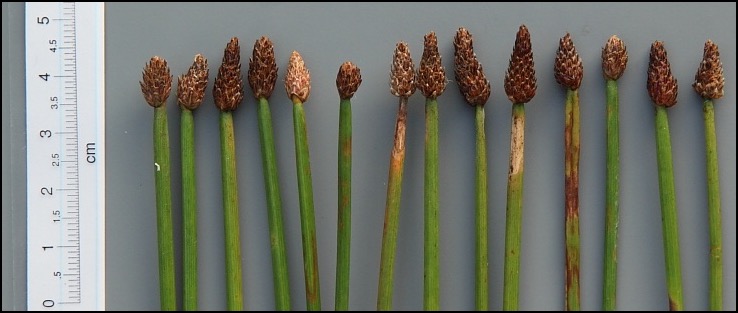
spikelets showing typical range of variation in outline
Flowers ⇑
➢ stigma 2-forked
➢ perianth bristles usually 5; rarely 6. See the page ⇒ID:palustris/austriaca for much further discussion and illustration.
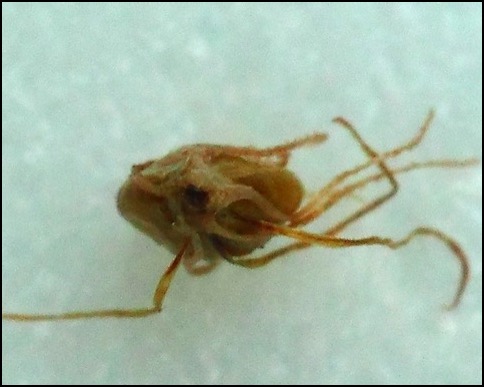
base of nut showing five perianth bristles arising from the ‘collar’
(plus three anther-filaments arising from between the collar and the nut)
Note that the bristle on the outer side of the nut is often divided from the very base (making 2 clear bristles) but may be forked part-way along its length (which is still counted as 2 bristles), as below.
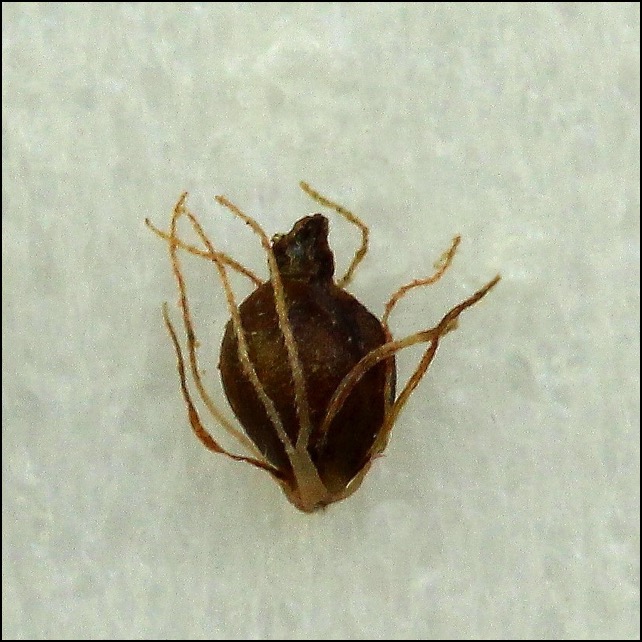
outer side of nut showing bristle forked above base
Nuts ⇑
➢ style-base (stylopodium) is persistent, and swollen, but to a lesser degree than in palustris (and the other larger species)
➢ style-base has a constriction (‘neck’) at its junction with the nut
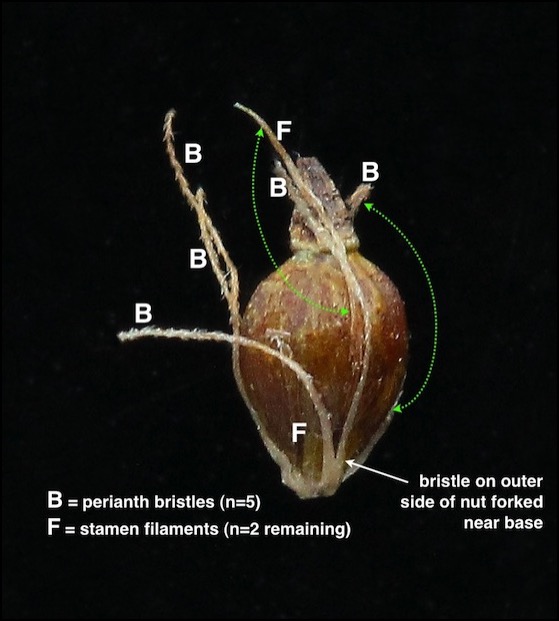
ripe nut showing swollen style-base with constricted ‘neck’,
5 perianth bristles (B; note downcurved hooks)
and 2 remaining filaments (F)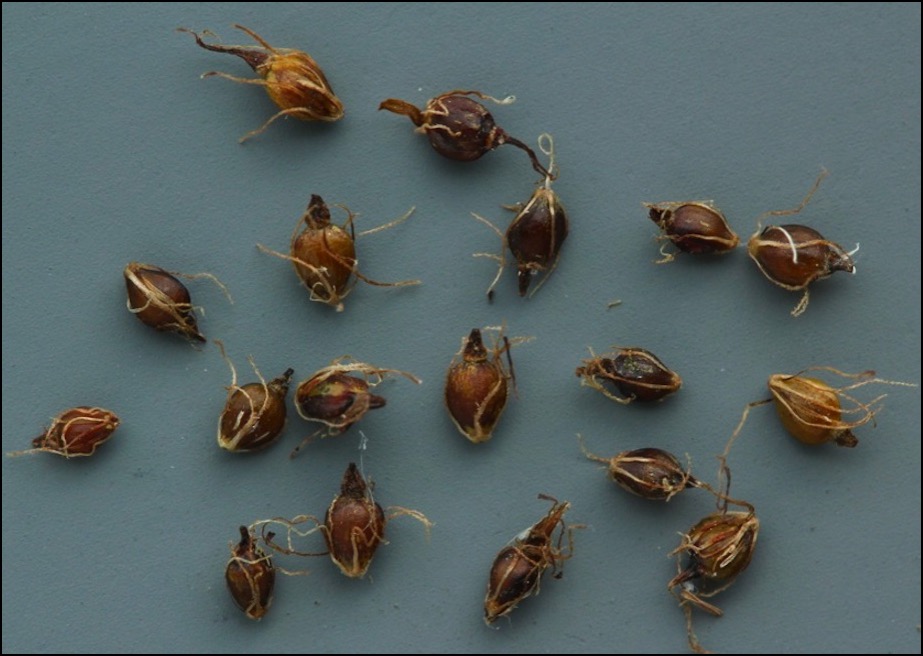
nuts, showing style-base swollen and constricted at junction with nut;
perianth bristles (paler brown); anther filaments (darker brown)
Stem sections ⇑
➢ see the page ⇒ID:palustris/austriaca for discussion. Note circular section.
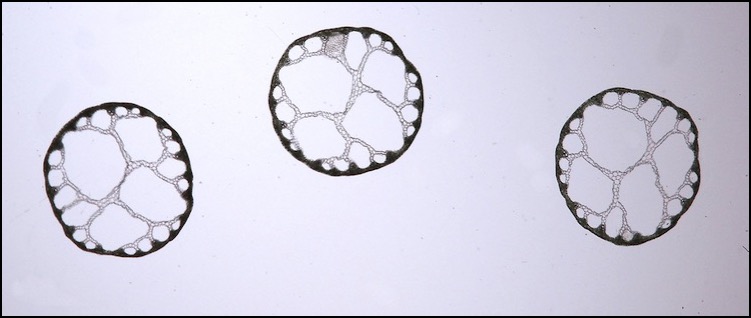
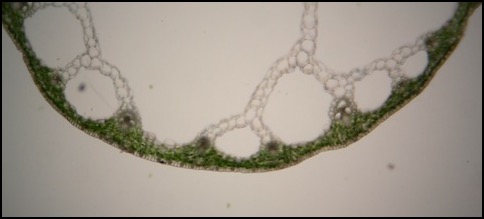
Epidermis ⇑
➢ note very 'open' structure, compared with palustris. See the page ⇒ID:palustris/austriaca for discussion.
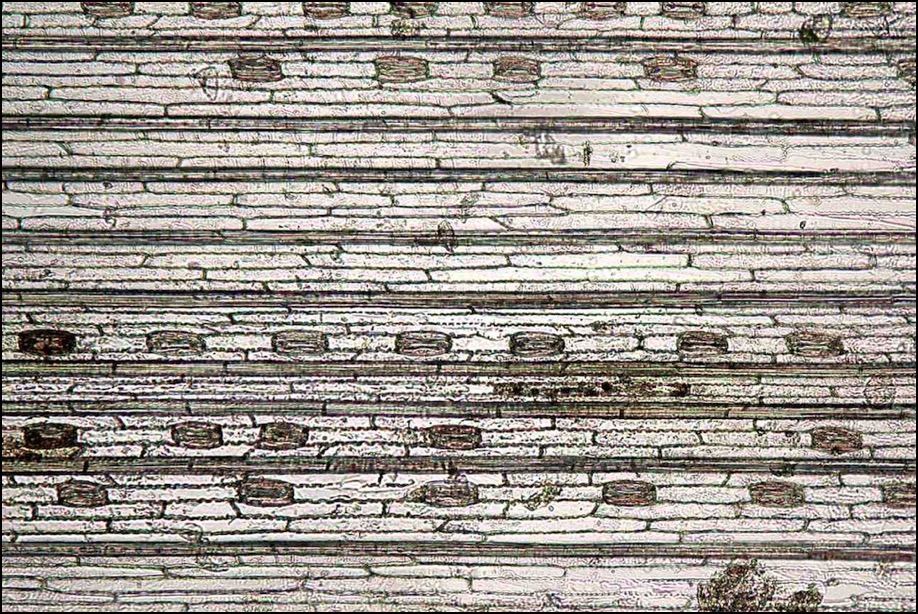
Stomata
➢ note the protruding guard-cells. The size and form of the stomata are very useful for distinguishing vegetative palustris subsp. vulgaris from austriaca. Go to ⇒ID: palustris/austriaca for full discussion.
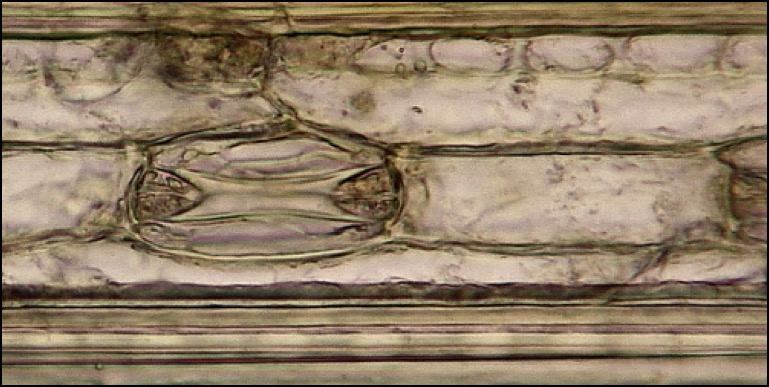
Habitat ⇑
➢ mostly upland: occurs in areas of metamorphic and limestone country rocks.
➢ typically emergent from shallow or deeper water, often from silt over a gravelly substrate.
➢ rarely in rapidly-flowing water (compare palustris).
➢ very characteristic of ox-bow pools, deeper pools in side-streams, ditches etc., by upland rivers.
➢ can also occur along the main river but generally then in slacker sections.
➢ also readily colonises small artificial ponds, gravel pits, quarry bottom pools, etc., but very rarely at lower altitudes.
It is not obvious why this species does not occur (in UK) in sheltered bays in upland lakes – perhaps it is overlooked in such sites?
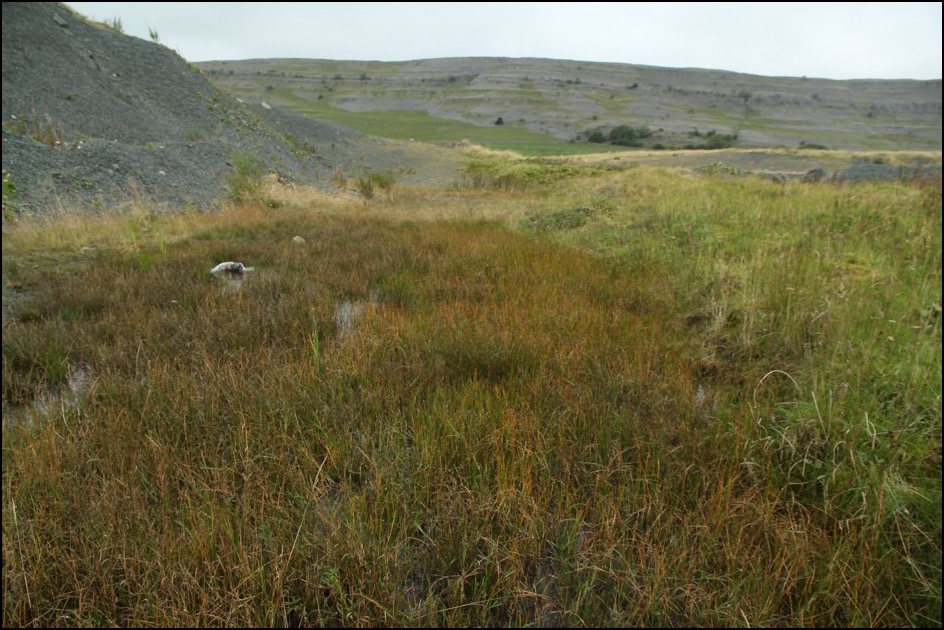
Ingleton ‘Slate’ quarry: dominant palustris with some small patches of austriaca (September 2011)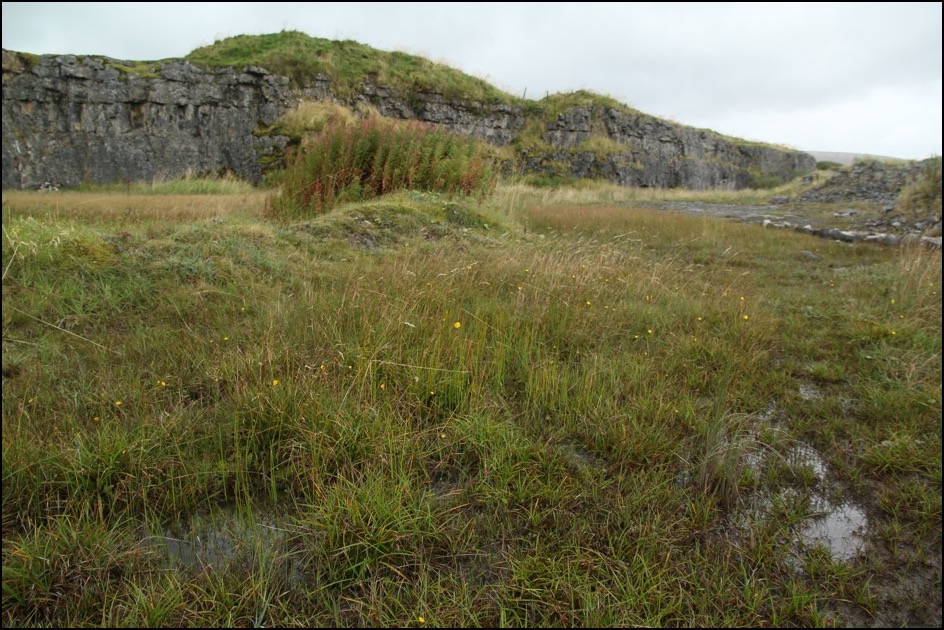
Ribblehead Quarry (Yorkshire): austriaca in remaining open small pools, with palustris becoming dominant beyond (September 2011)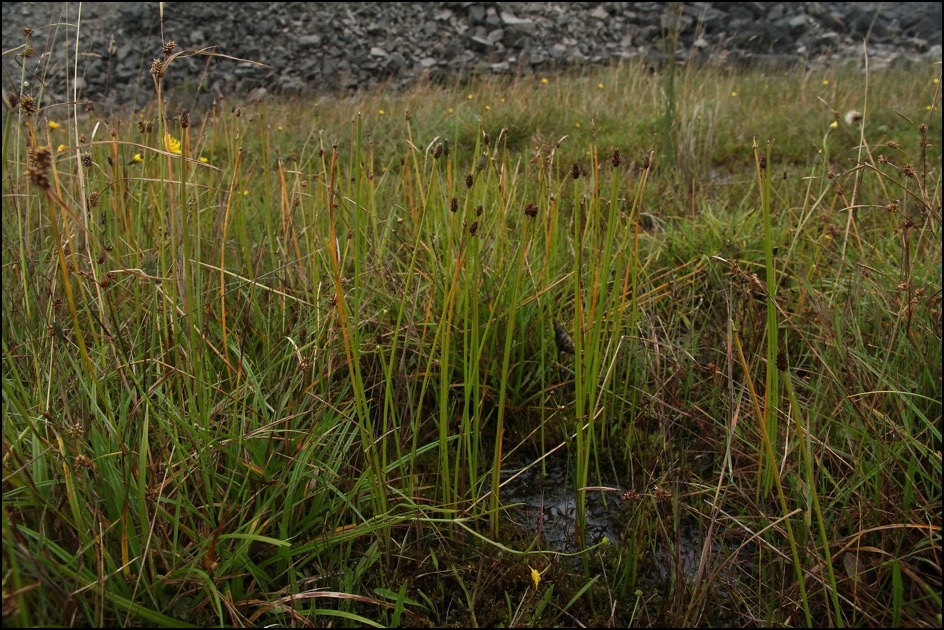
Ribblehead Quarry NNR (Yorkshire): austriaca in remaining open small pools (September 2011)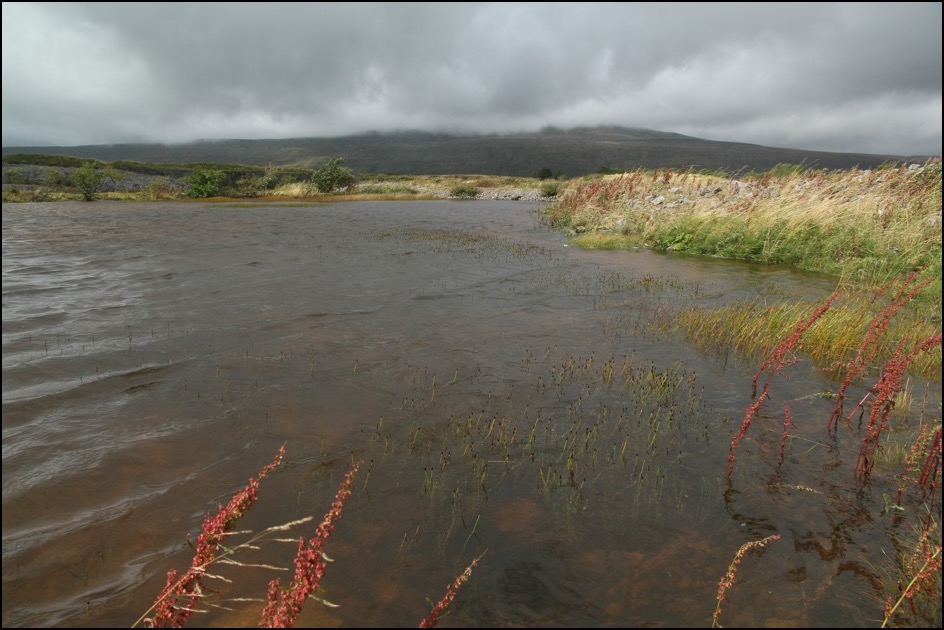
Ribblehead Quarry NNR (Yorkshire): austriaca in large pool – under 30 cm flood water (September 2011)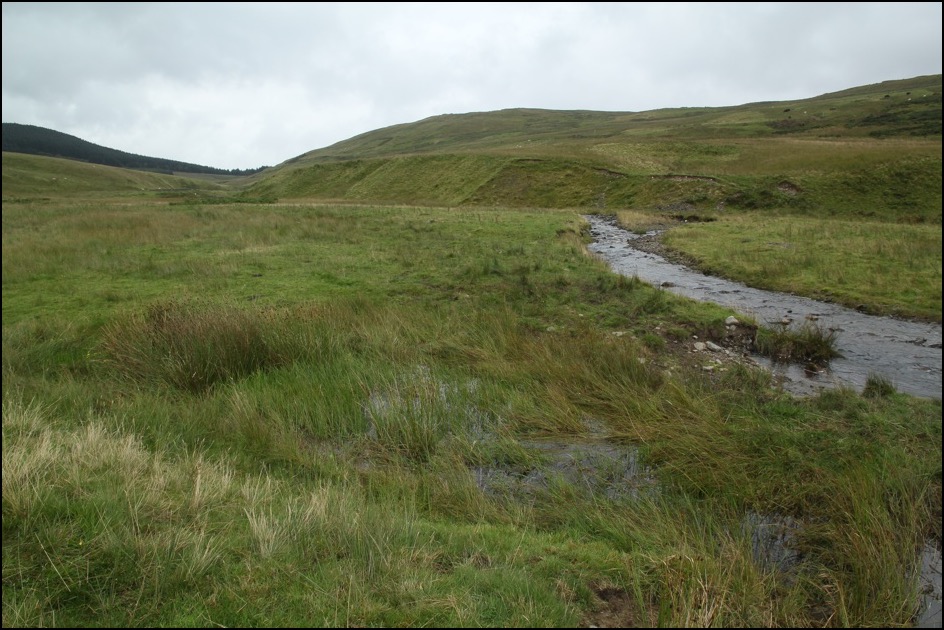
Tomleuchar Burn (Dumfries & Galloway: recent find by Chris Miles): austriaca in deep pool in sidestream (September 2011)
Tomleuchar Burn: austriaca in deep pool in sidestream (September 2011)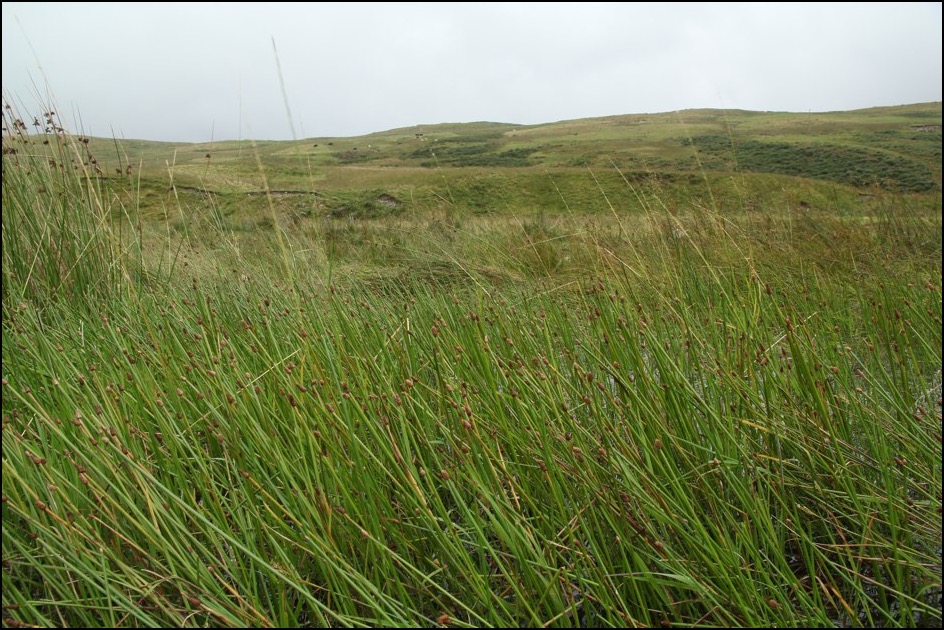
Tomleuchar Burn: austriaca in deep pool in sidestream (September 2011)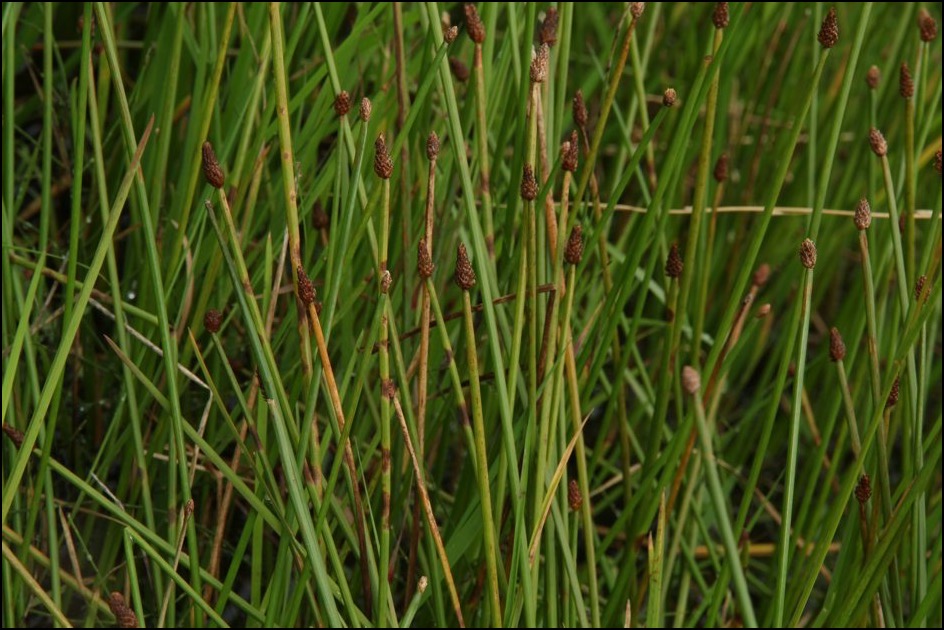
Tomleuchar Burn: austriaca in deep pool in sidestream (September 2011)
Frequency & range ⇑
➢ very local in northern England and southern Scotland. See ⇒distribution map.
➢ rather ephemeral; an early colonist and poor competitor: readily eliminated as pools become overgrown, and often ousted by E. palustris.
References ⇑
Gregor, Thomas (2003) Eleocharis mamillata – Distribution and Infraspecific Differentiation (Folia Geobotanica 38: 49–64).
This can be downloaded from the following link, under the heading '2003':
http://flora-deutschlands.de/Publikationen/Publikationen_T_Gregor.htm
Strandhede, Sven-Olov (1966) Morphologic Variation and Taxonomy in European Eleocharis, Subser. Palustres. (Opera Botanica 10:2; 1–188).
This can be ordered from:
http://www.koeltz.com/
Strandhede, S-O & Dahlgren, R. (1968) Drawings of Scandinavian Plants 9-10. (Botaniska Notiser 121–1, pp. 1–10).
[I have not found a source for this.]
Links to the other Eleocharis spike-rush pages (also accessible from the sidebar)
Species pages
Separation of similar pairs
Other information
